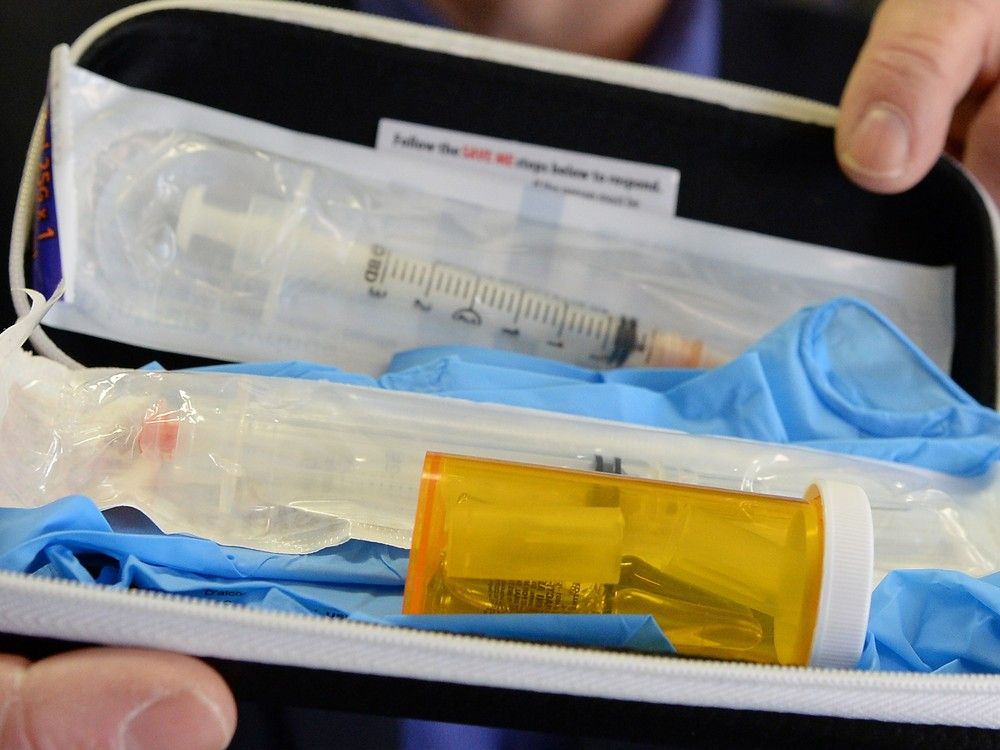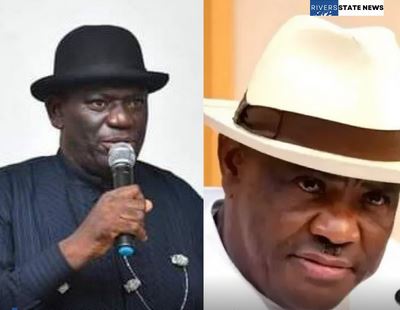
Article content First Reading is a Canadian politics newsletter that throughout the 2025 election will be a daily digest of campaign goings-on, all curated by the National Post’s own Tristin Hopper. To get an early version sent directly to your inbox, sign up here . TOP STORY The last time Canada held a federal election, it turned out be to the most pointless in our history.
The 2021 result ended up being almost exactly the same as the 2019 result, changing absolutely nothing. This time is probably going to be different: Forces are being unleashed and precedents are being set that — for better or worse — are likely to resonate for decades to come. In fact, the 2025 election has already charted quite a few firsts.

Below, a few ways in which things are happening in the 45th election that haven’t happened in any of the prior 44. First time two Albertans have jockeyed for the top job Mark Carney and Pierre Poilievre are obviously not Albertans currently; both of them liveare ordinarily resident in Ontario. But this is the first general election in which the two main contenders spent a substantial portion of their childhood in Alberta.
Poilievre was born and raised in Calgary, and Carney lived in Edmonton from age six until he graduated from high school. A prime minister with an Alberta childhood is so rare that it’s only happened once before in the form of Joe Clark, who was born in High River, Alta. The other two Albertan prime ministers — Stephen Harper and R.
B. Bennett — didn’t live in the province until adulthood. First time the two main contenders for prime minister are running in neighbouring ridings Poilievre is the longtime MP for Carleton, a mostly rural riding in the Ottawa hinterlands.
And right next to it is Nepean, the riding being contested by Carney. Even in the days when Canada had just 181 seats, you never previously got a situation in which the two main contenders for power were angling for side-by-side ridings. About the closest you’re going to get is the elections of 2004 and 2006, when then Liberal leader Paul Martin had a Montreal riding that was a short walk from the riding of Gilles Duceppe, leader of the Bloc Québécois.
It also means that whoever is prime minister after election day, they’re likely going to represent an Ottawa riding. That’s only happened once before, when the first prime minister, John A. Macdonald, briefly represented what is now Poilievre’s riding of Carleton.
And Macdonald was sort of a special case. He repeatedly parachuted into random ridings where he thought he would win — sometimes in the middle of an election. First Canadian election that non-Canadians have cared about This is a somewhat subjective measure, but it’s safe to say that foreign media have not particularly cared about Canada’s other 44 general elections.
The results would be reported in the back pages of The New York Times or The Guardian, but the ebbs, flows and key issues of the campaign would receive almost no international coverage. When the Boston Globe reported on Canada’s 1958 election, for instance, it began with a preamble describing the country as a “less developed” place akin to a “pleasant family” next door. “When Canada holds a national election, as she does today, Americans become acutely conscious that the Dominion is a foreign country,” it read.
This time around, the whole election is occurring under the shadow of U.S. President Donald Trump — whose trade war with Canada was just the opening salvo in a series of similar trade actions being launched against the E.
U., Australia and others. This has prompted an outsized level of international coverage under headlines like “Canadian federal election: Who will be the political antidote to Donald Trump?” It also involves characters that are relatively well-known to non-Canadian audiences.
Carney has a high profile in the U.K. due to his tenure as the governor of the Bank of England; his appointment as Canadian prime minister yielded a tide of British commentary and even an anti-endorsement from former U.
K. prime minister Liz Truss. Poilievre, similarly, has unusually high international name recognition given the standards of a Canadian opposition leader.
Poilievre has often been featured in conservative U.S. media as the likely successor to Justin Trudeau, and a recent long-form podcast appearance with psychologist Jordan Peterson received more than five million views — likely the most-watched piece of media ever involving a resident of Stornoway.
First time young Canadians have leaned Tory harder than their parents There have been prior elections in which young people have gone against type and voted for a conservative option. Progressive Conservative landslides in both 1958 and 1984 featured a plurality of under-30 voters voting conservative — many of them for the first time. But where the 2025 election is unlike any other is that younger voters are supporting the Conservatives at higher rates than older voters.
The strongest base of support for the Tories is among voters in their 20s. The strongest base of support for the Liberals is among senior citizens. There have been generation gaps in all the other elections, but it’s always been the other way around.
First prime minister who’s never previously contested an election Carney is not the first prime minister to be appointed to the job without winning a general election; about half of his 23 predecessors took office in midstream. He’s also not the first prime minister to be appointed despite not sitting in the House of Commons; that’s happened five times before. But Carney is the first prime minister of Canada with zero experience in elected office, either in the House of Commons, a provincial legislature or even a city council.
The 2025 election will be the first time his name has ever appeared on an election ballot in any capacity. Even in the U.K.
, you’d have to go back to the 18th century until you could find a first minister who won the office despite having never run in a public election. The closest equivalent is probably the Marquess of Rockingham, who briefly served as British prime minister in the 1760s and again in 1782. Although the Marquess was a career politician, it was all served in appointed posts and he never had to stand as an MP.
(An alert reader has pointed out that a more-recent example would be The Earl of Rosebery, who was U.K. prime minister between 1894 and 1895.
The Earl inherited a seat in the House of Lords, and while he helped coordinate campaigns, he was never a candidate). The most two-party race since 1930 If the polls are to be believed, more than 80 per cent of voters are planning to vote either Liberal or Conservative on election day. One particularly dramatic Mainstreet Research poll from this week found 44 per cent of decided voters leaning Liberal, 41 per cent voting Conservative — and the NDP, Bloc Québécois and Green Party all scrabbling for the 15 per cent left over.
To find a prior election with that much of the voter base consolidated around two parties, you’d have to go all the way back to 1930. The Great Depression was already starting to kick in, and a panicked electorate abandoned all its usual third-party choices in favour of the two main contenders. The end result looked like a U.
S. presidential election; 47.79 per cent voted for the winner, Conservative R.
B. Bennett, and 44.03 per cent voted for his main rival, Liberal Mackenzie King.
The third-place finisher, the United Farmers of Alberta, managed just 1.5 per cent. The worst-ever poll results for the NDP Even if Carney loses this election, he’s probably going to avoid the humiliation of 2011, when the Liberals were handed their worst-ever electoral showing.
The Bloc Québécois, similarly, probably won’t do great on election day, but they’ve had worse (when the 2015 election kicked off they only had two seats in the House of Commons). But if nothing changes for the NDP, polls are showing them on course for the worst result they’ve ever posted since their 1961 founding. Every major pollster has them at seven per cent of the popular vote or less.
This would likely translate into just one or two seats — and it could even blow the party out of Parliament entirely. For comparison, the NDP’s existing benchmark for “worst election ever” was in 1993, when they won nine seats. The worst French for an incumbent prime minister since John Turner This is a rare federal election in which none of the big three national parties are headed by a Quebecer.
And although Poilievre is a native French speaker (his parents are Franco-Albertans), both Carney and NDP Leader Jagmeet Singh learned the language as adults. And as Francophones are noticing, Carney is visibly struggling with the language — sometimes to the point where he’ll start answering a question in French, and then switch to English after several false starts. While it’s difficult to compare French acuity, the last time Canada held an election featuring a prime minister defending his record in broken French, it was 1984.
Liberal leader John Turner spoke French, but a kind of French that was charitably described as “functional.” The wealthiest party leader since Paul Martin In sharp contrast to, say, the United States, Canada doesn’t have all that many multi-millionaire politicians. The average Canadian party leader is a career politico; comfortable, but not in the proverbial “one per cent.
” Even Justin Trudeau — who was often criticized for his privileged background — entered politics with an inheritance that barely cracked seven figures . Carney is not overly transparent about his net worth, but we do know that he had $6.8 million in stock options from his former employer before entering politics.
This alone would make him one of the wealthiest people to either lead a major party or become prime minister. But the top spot, by far, belongs to Paul Martin. As owner of Canada Steamship Lines, Martin had a net worth of more than $200 million when he was prime minister.
At the time, this made Martin the world’s richest democratic leader, second only to billionaire Italian leader Silvio Berlusconi. Get all of these insights and more into your inbox by signing up for the First Reading newsletter here ..















